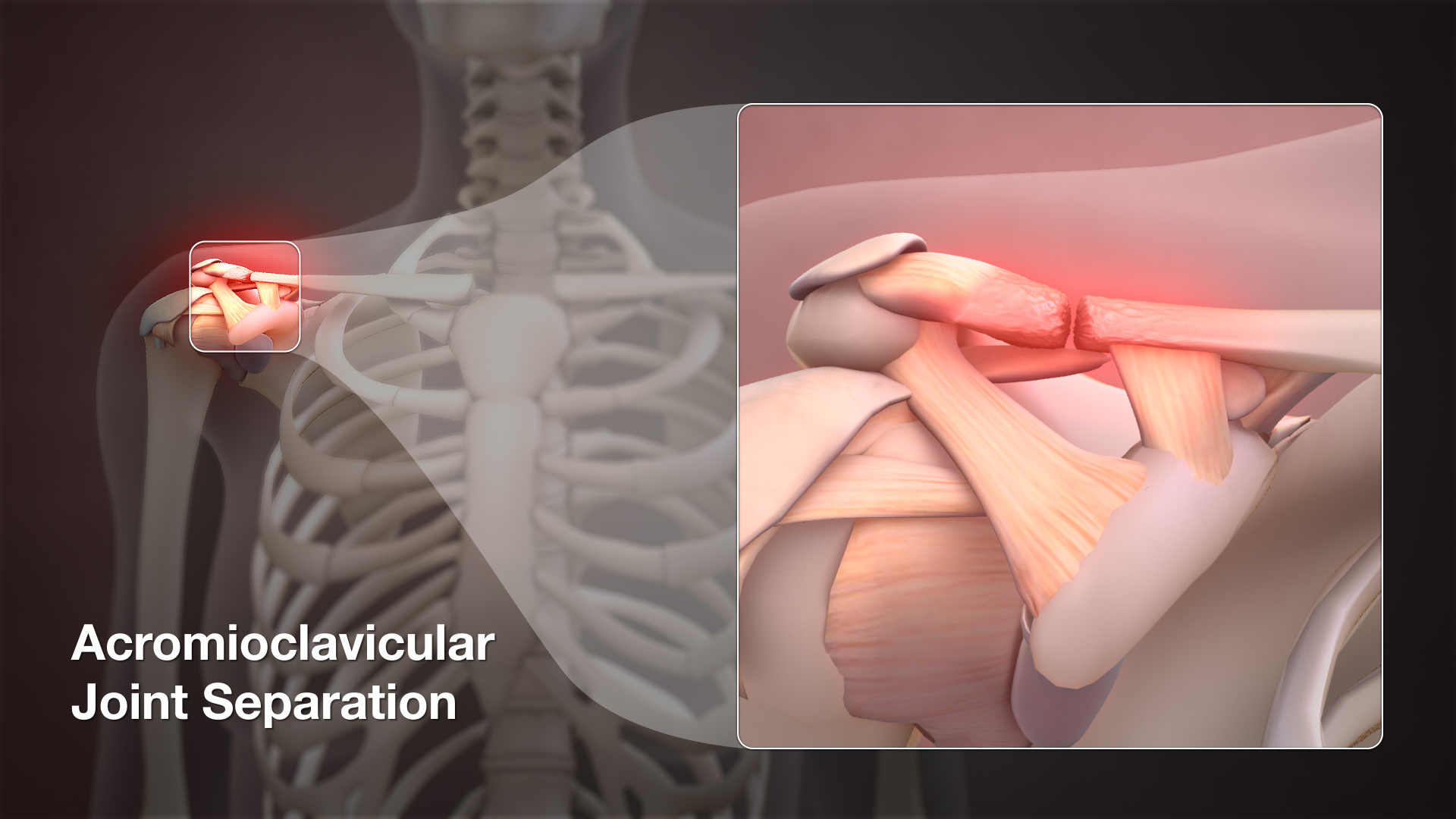An acromioclavicular joint separation is an injury on the shoulder when the collarbone called clavicle separates from the shoulder blade called the scapula. This injury usually happens in people who are physically active. It can also happen if a person directly falls on the shoulder. Most of the cyclists and footballers happen to face the problem of AC separation when they get hurt by the handlebar on the shoulder.

Symptoms
Pain in the shoulder starts immediately when the person falls directly on the shoulder or gets hit in the shoulder with force. But in some cases, the symptoms are seen slowly after some time. Some of the prominent symptoms of Acromioclavicular separation are:
- Limited movement in the shoulder area and so the movement of the hand gets restricted
- Bruises and swelling around the shoulder
- The joint on the shoulder becomes tender
- Possible deformity in the outer end of the collar bone
- A little bump may be visible on the top of the shoulder
- A popping sound may occur when the joint moves
It is always advisable to visit the doctor if any of the symptoms become severe or the pain becomes unbearable.
Causes
Usually, Acromioclavicular joint separation occurs because of directly falling onto the shoulder or of a blow on the shoulder. The shoulder blade and collarbone are connected by Acromioclavicular joint, which is held together by CC(coracoclavicular) and AC ligaments that get torn in an AC separation. The separation is classified into three types:
- Type 1- In this type, the Acromioclavicular joint is slightly displaced or both the AC and CC ligaments are partially torn or stretched. This is the most common AC separation and can happen due to various reasons.
- Type 2- In this type of AC separation, the AC ligament is completely torn while the CC ligament is partially injured or not at all injured. In this case, there is a partial dislocation of the Acromioclavicular joint.
- Type 3- In this type, the Acromioclavicular ligament, coracoclavicular ligament, and the capsule surrounding the Acromioclavicular joint are completely torn and separated. The shoulder falls because of hand weight as the ligament is lost and this causes a bump on the shoulder. This type of AC separation is also very common in people who are physically very active.
Type 1 separation is not very serious and can be cured within a few weeks, but type 3 separation is very much serious because of the serious disruption of ligaments which binds the shoulder and arms.
Treatment
The treatment for Acromioclavicular separation depends upon the intensity of injury caused. All type of injury from type 1 to type 3 can be treated by using non-operative methods such as:
- Ice is used in most of the cases to reduce the swelling and pain
- Physicians suggest taking painkillers and anti-inflammatory pills
- Taking rest and providing proper care to the injured location is a must to heal it quickly
- Protective sling is used around the help to support the separation joint
- Gentle exercises and tolerable exercises are done when the hands are able to make some movement
Depending on the injury, the joint separation can be healed within 2 to 3 months by using non-operative techniques.
Surgical methods are used in those cases when the pain is unbearable and it does not respond to the non-operative methods. If the pain continues in the separation joint for any overhead movement, then the physicians suggest going for surgery.
Disclaimer: The information in no way constitutes, or should be construed as medical advice. Nor is the above article an endorsement of any research findings discussed in the article an endorsement for any of the source publications.








